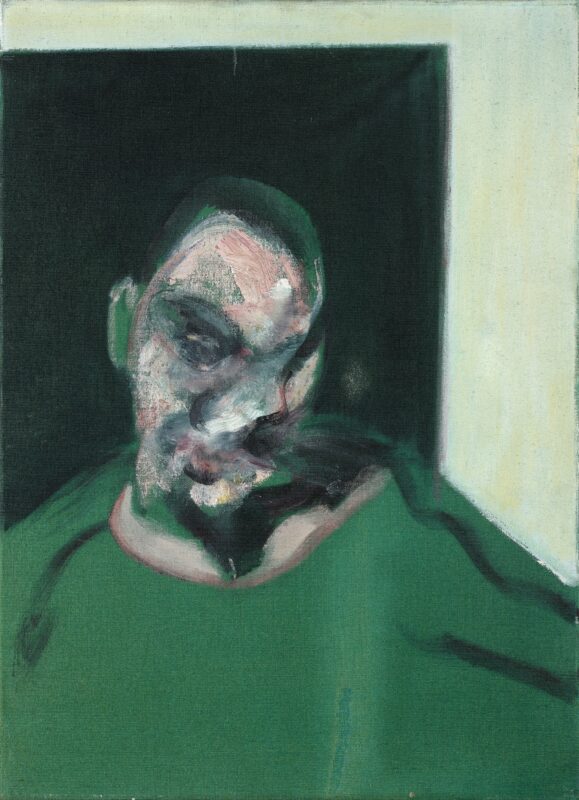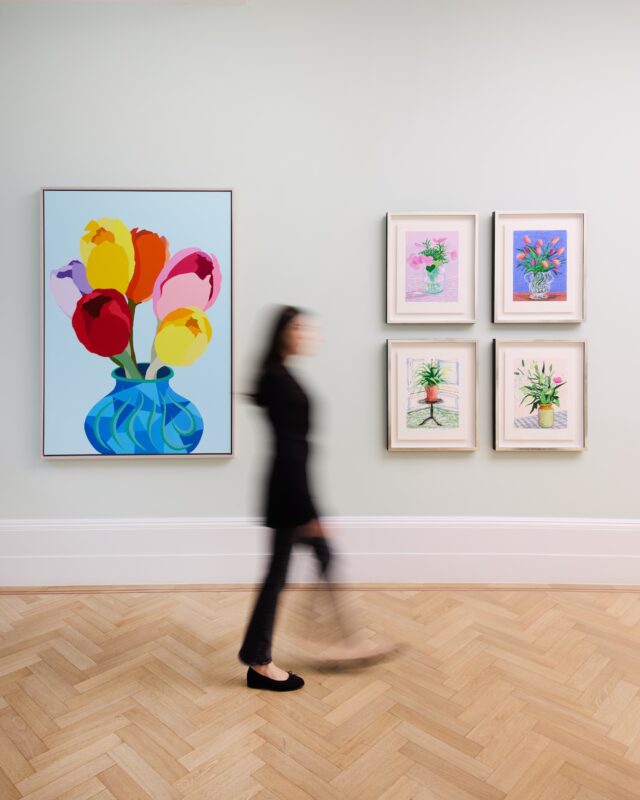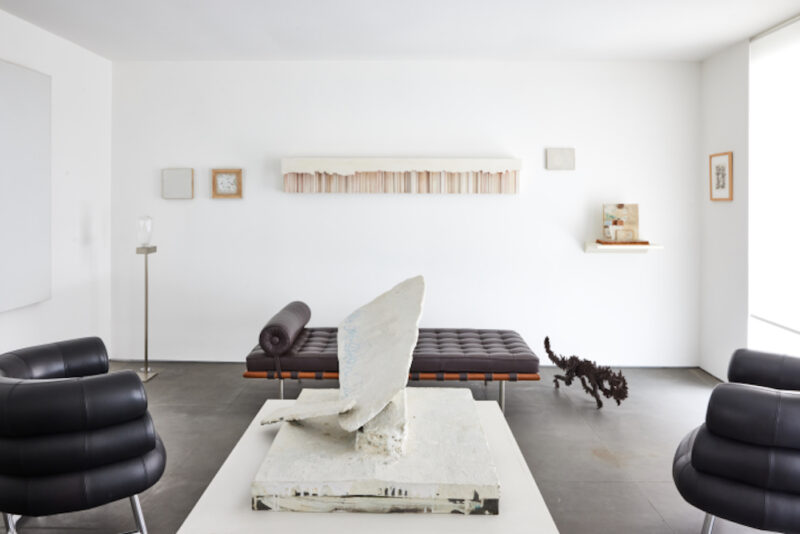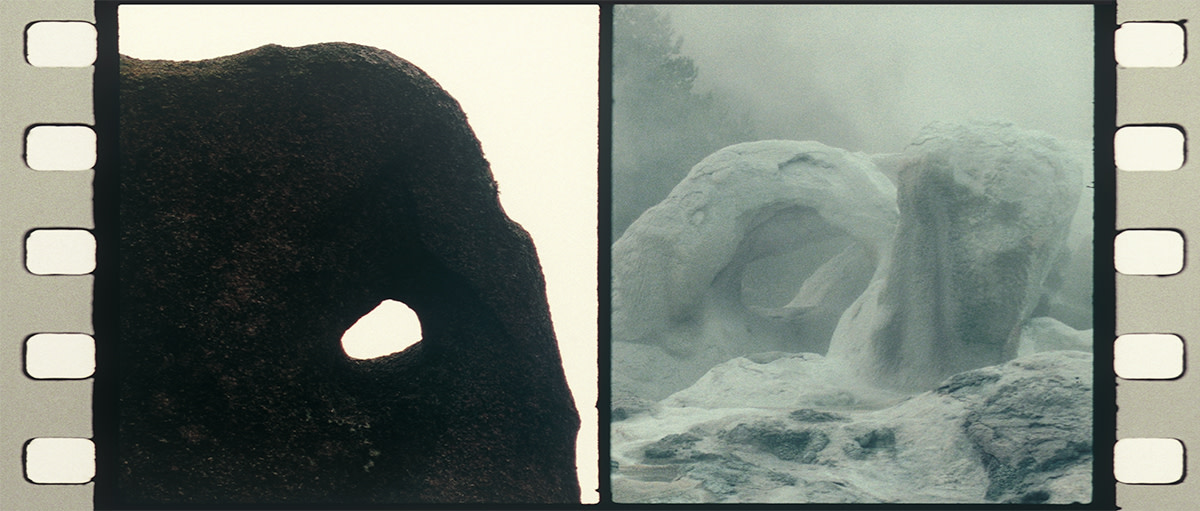
Tacita Dean, Antigone (film still) © Courtesy the artist, Frith Street Gallery, London and Marian Goodman Gallery, New York/Paris
This week I tried as much as possible to avoid any feed relating to you Manifesta and Art Basel. Unsurprisingly I couldn’t. One of the works offered by Niels Borch Jensen Gallery that struck me was Tacita Dean’s Quarantania (2018) – a stunning work on seven panels depicting a mountain against a rusty pink graduated sky, reminiscent of Ed Ruscha.
I then rushed to the Royal Academy to see Landscapes, the remaining component of Tacita’s tryptic shows. The Academy itself was bustling with visitors wondering around the newly opened corridors with casts, graduate shows and crucially, the Summer Exhibition. Walking upstairs in the new Gabrielle Jungels-Winkler Galleries I was pleased to find that Landscapes was relatively quiet. I should note that no photography was allowed (nor was it allowed at the National Portrait Gallery) so I will be relying on my own ability to conjure images (and other copyrighted material).
Upon entering I was faced with The Montafon Letters an enormous blackboard panel with Tacita’s chalk marks cascading down, reflecting light, composing an invincible slope. This was embraced, on either side, by her chalk cloud spray-paintings, Forty Days, a series of works inspired by John Nash’s nimbus watercolour in which the portrait of his wife could be discerned. This is perhaps the single most important detail to unlock Tacita’s works and the interplay of the three shows that took place across London namely Landscape, Portraits and Still Life. She likes to explore the space between what we perceive to be a classical still life and movement, noting that whilst the French nature morte linguistically precludes a living subject from being portrayed, the English language offers ambiguity, the subject need only be still.

Tacita Dean, Quarantania © Art Basel and Niels Borch Jensen Gallery and Editions
This movement, the breath of life, is evident in her collection of round stones, her Four, Five, Six, Seven and Nine Leave Clovers (1972 – Present). The act of plucking the clovers, over decades, of selecting the stones, permeates them with warmth thereby showing them as anything but cold and lifeless. It was in the second room, facing the clovers that I found what I had been looking for in the first place: Quarantania. The large scale print has Tacita’s chalk writings – I could discern the eponymous title, as well as, towards the final panel the word temptation. The white marks, dotted around, are imperceptible. They caress the green blue shadows on the mountain, find their way on the dry surface of the landscape, and ascend to a breath taking sky.
In the final room, Antigone was being screened. The film, comprising 2 synchronised 35 mm colour films, originated with Dean’s sister, named Antigone. Dean became fascinated by the figure and her relationship with Oedipus. In particular, she looked to the years between two plays Oedipus Rex and Oedipus at Colonus – seeking to script details of their companionship which would add depth to each of the characters. In making the film she came across Anne Carson who had played with exactly the same notion in her poem, “TV Men: Antigone (Scripts 1 & 2)” recited in the work. We see their companionship, punctuated by the interruption of soundmen who, due to the strong wind, ultimately cut down Antigone’s script to seven seconds.
Dean, in Antigone, creates a wonderful narrative that is largely directed by her use of film as a medium. The overlaid sound, the backlighting, the distinctly analogue colours all inform the story and allow for poetry, discourse and thoughts to circulate freely on the reel. Whilst Antigone is indeed a landscape, in Dean’s sense, at the National Portrait Gallery we see how she uses the same medium for portraiture. Again, she is carried by film itself and does not seek to direct its course. I found this evident particularly in GAETA (fifty photographs plus one), as she was invited to visit Cy Twombly’s studio there. Unlike Sally Mann’s Twombly photographs (shown at Gagosian Rome a year ago), where Mann’s eyes are clearly behind the lens, Dean appears to have a divergent approach. She focuses on Twombly’s writings, his idea that in scribbling down names or Classical citations, he could evoke these directly in his work. It’s as if Dean takes this to heart and allows for the still life to express itself, to show that it lives, it conjures dreams. I thought of her photographs as poems (which exemplified how perfect they were as Twombly’s portrait in effect, capturing the landscape around him as a fertile environment, communicating with him, with us and with her).
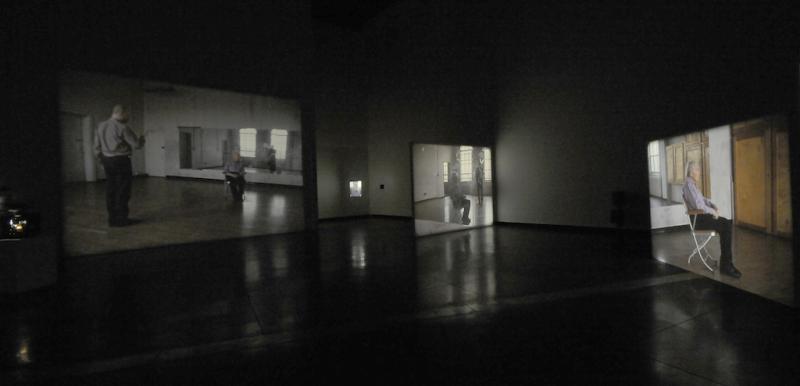
Tacita Dean, Merce Cunningham Performs Stillness. Courtesy the artist, Frith Street Gallery, London and Marian Goodman Gallery, New York/Paris
One of the more lighthearted portraits was that of David Hockney, in the very first room, wearing a blue pullover with a bright orange shirt – both hues appearing beautifully on the 16mm – smoking. Whilst I could keep on writing pages and pages on each of the works, the final one I spent a great deal focusing on was Merce Cunningham Performs Stillness (2008) comprising six screens. Cunningham is shown in his dance studio, sitting, occasionally being told he can move and relax. The screens are at our height and fill up a dim gallery which itself resembles the dance studio. As we walk through we can hear the sounds of the spool, spinning. This, and Cunningham’s figure surrounding us, in different positions, gives the installation a spectral quality, his body fluctuating around, as if he were dancing and performing for us – in his stillness.
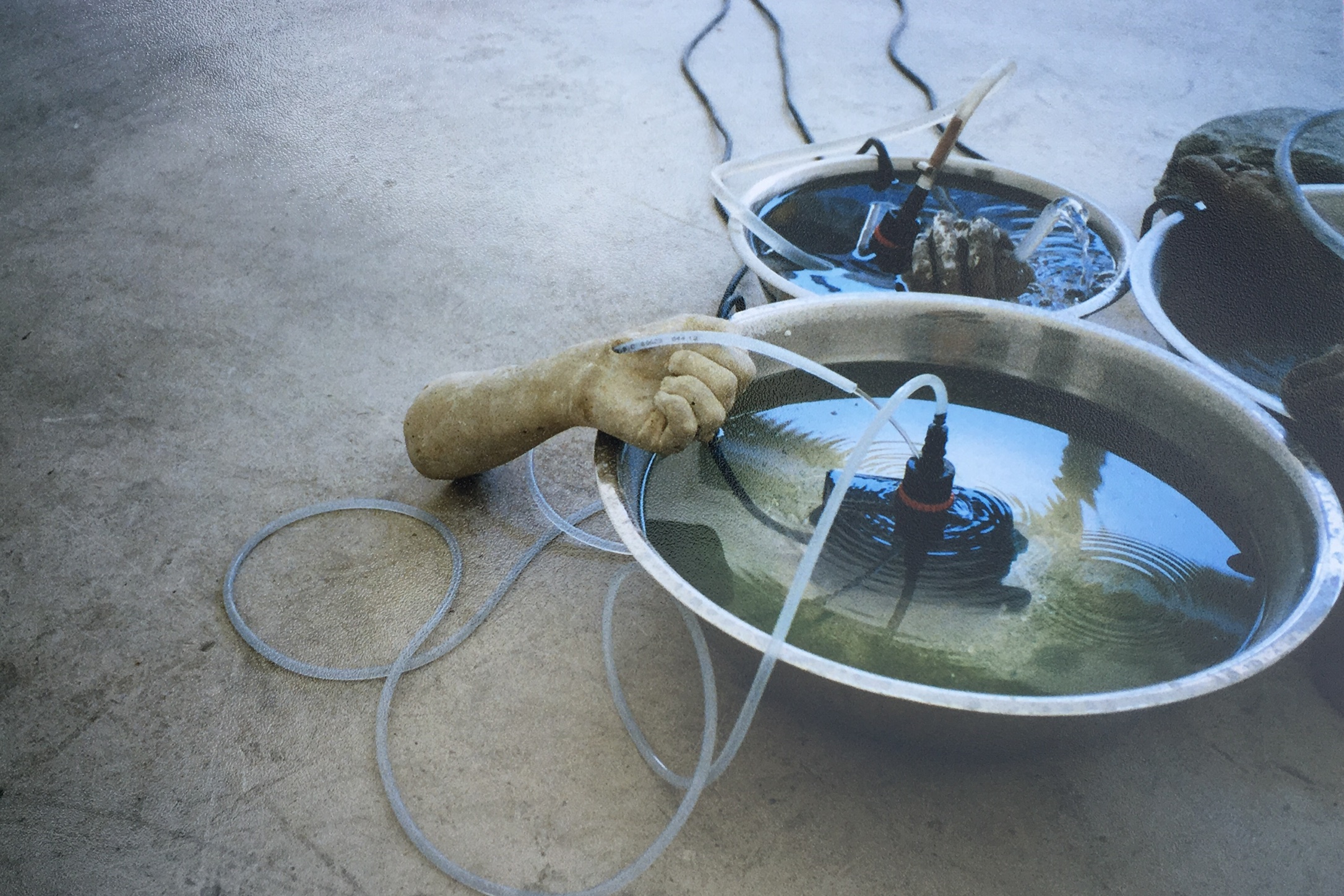
Alix Marie, La Femme Fontaine
With this in mind, as I went to collect my photographs, within them I found one I had taken at Roman Road gallery. It was of Alix Marie’s La Femme Fontaine, her first solo exhibition in London. The show concluded in May but I recalled finding myself there by accident and walking into the space, hearing the soothing sound of water. If Tacita likes to explore the boundaries between what we associate with still life and movement, Alix Marie fits well within this overlap. Taking concrete casts of her body – arms, mouth, nose, breasts – she then brings them to life using plastic tubes as veins, water passing through them. The fountains are very spartan, metal bowls with simple jets. Marie names her work from a French expression describing female ejaculation. The notion of fluids and wetness is evidently explored, given the installation, as Marie allows all of her fragmented body to carry fluids. The association with motherhood is also an easy one to make, allowing us to consider the different perception of bodily fluids a woman can produce – and whether these are thought of as a taboo or a crucial component of life.
Whilst I appreciated this reading, I did not look at the press release until after I had walked around the gallery for a while. During that time I drew no specific connection to the female body, but rather focused on the fragmented body.
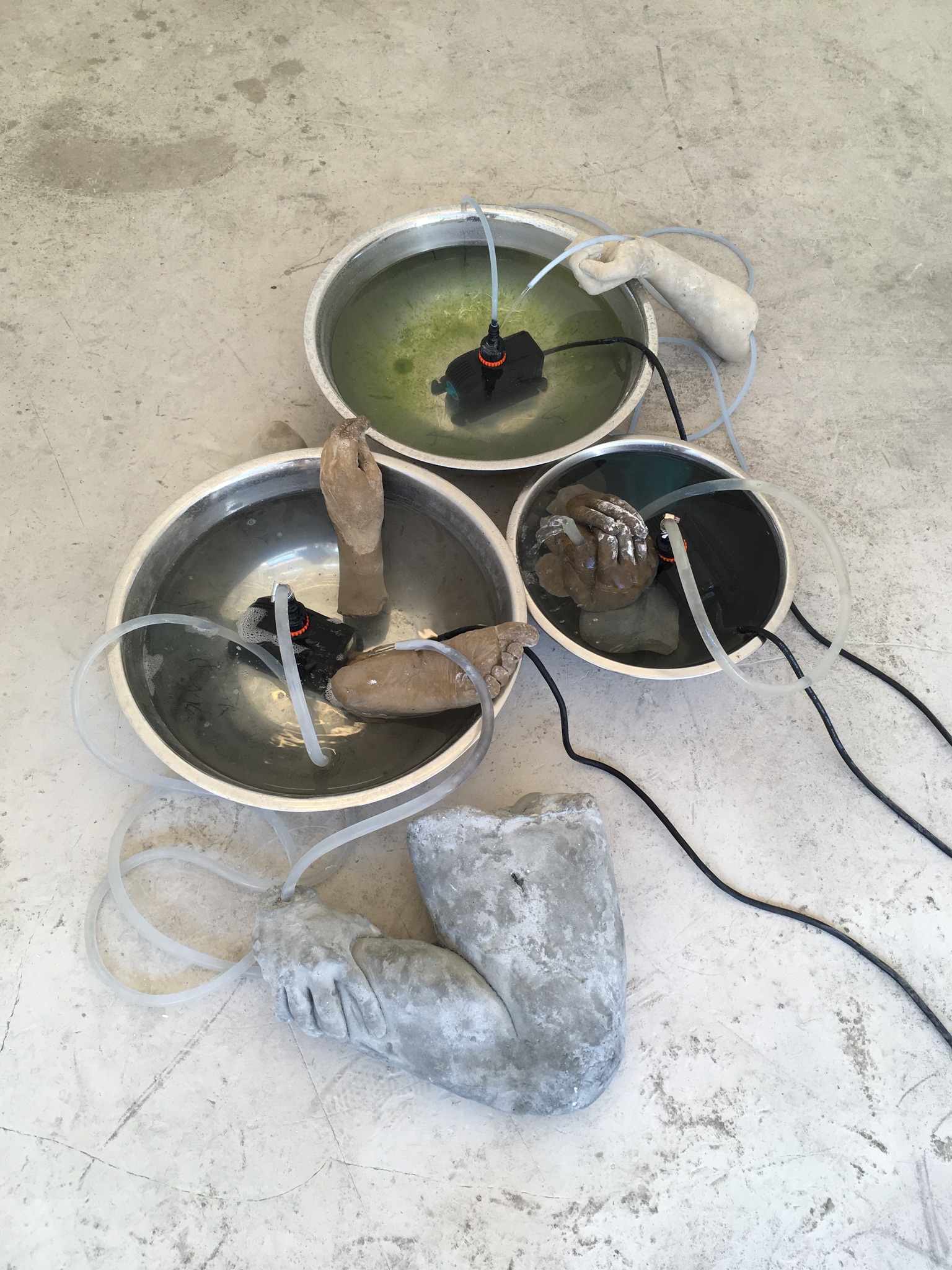 Marie’s work seemed to capture the reality of feeling fragmented and dissociated, often detached from one’s own body yet retaining a loose thread, albeit a fluid one – one whose strands may elongate, tangle, occasionally pull our components back together. One which can carry life and spirit or offer an empty vessel.
Marie’s work seemed to capture the reality of feeling fragmented and dissociated, often detached from one’s own body yet retaining a loose thread, albeit a fluid one – one whose strands may elongate, tangle, occasionally pull our components back together. One which can carry life and spirit or offer an empty vessel.
Alix Marie, La Femme Fontaine was on at Roman Road until 20 May 2018.
Tacita Dean, Potraits was on at the National Potrait Gallery until 28 May 2018.
Tacita Dean, Landscapes is on at the Royal Academy until 12 August 2018.


